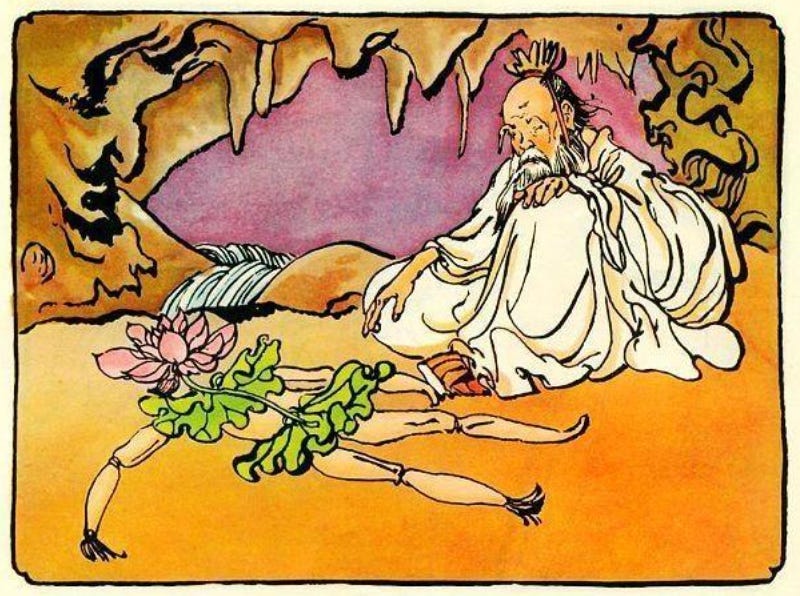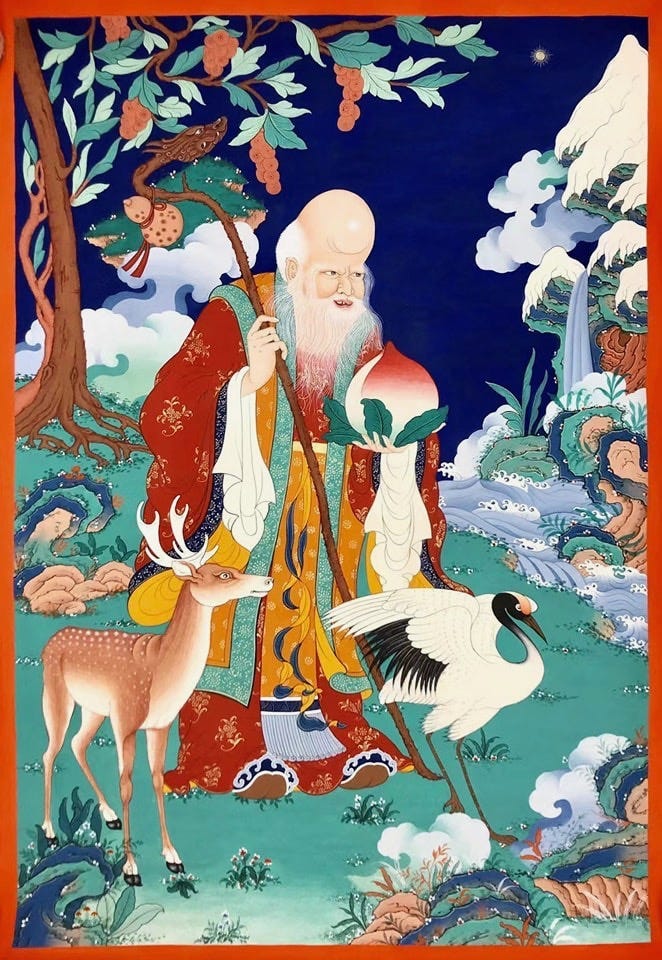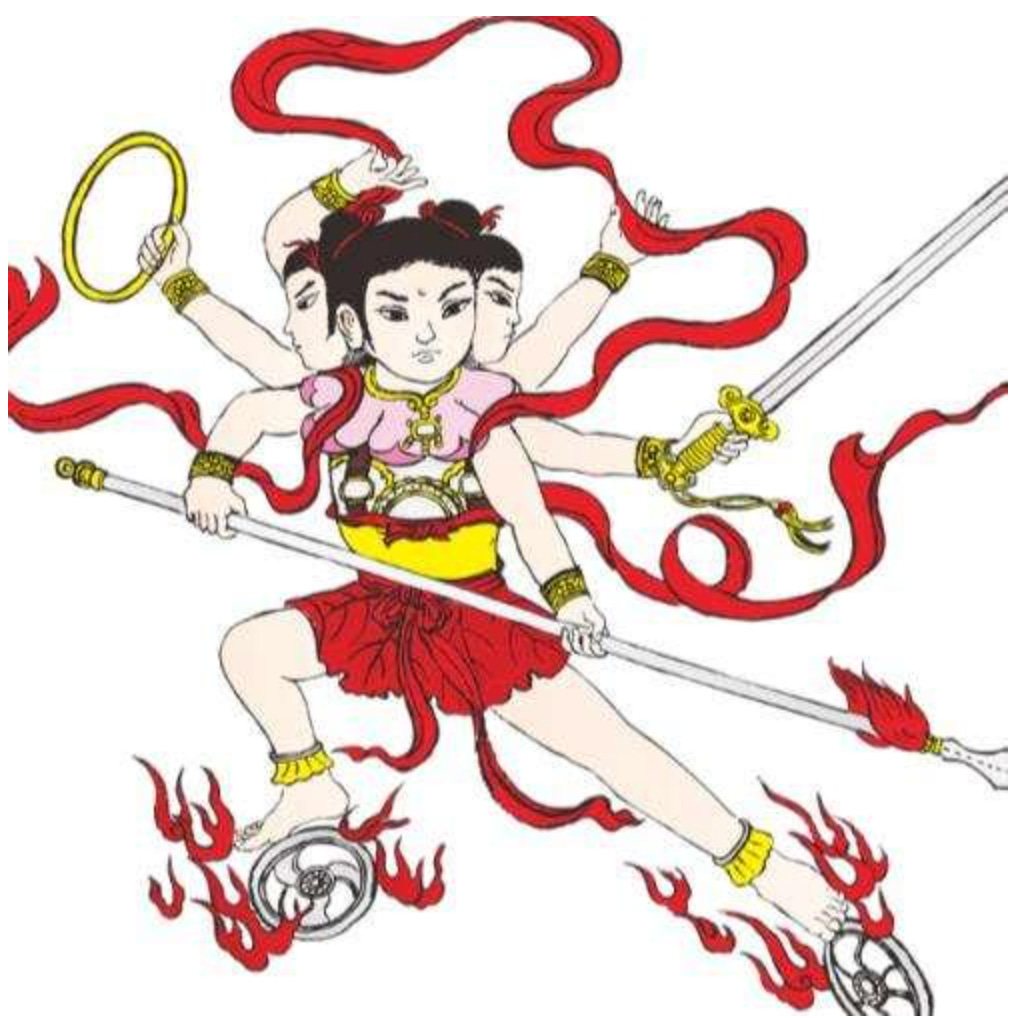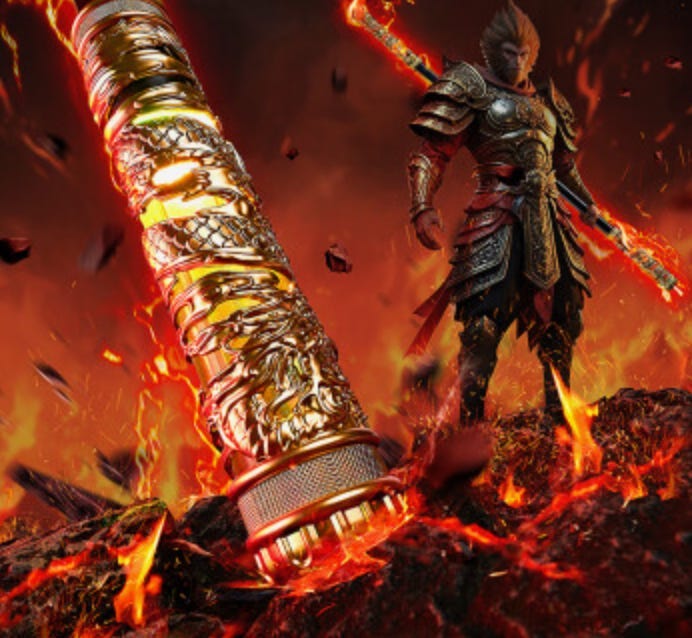What is the original story of Ne Zha?
Nezha Conquers the Dragon King is a mythological story in Chinese traditional culture, originating from the Buddhist legends of "Nezha returns his bones to his father and his flesh to his mother" and "The Great Sage Nezha, the prince, slays the dragon." The earliest mention of Nezha's origins can be found in the Buddha’s Praise of Acts Sutra – First Life Section. The act of "returning bones to his father and flesh to his mother" had already spread during the Song Dynasty. This plot initially aimed to reconcile the conflicts between Buddhist thought and Confucian ethics. In the Comprehensive Records of the Origins and Teachings of the Three Religions, completed in the Ming Dynasty and compiled during the Yuan Dynasty, the foundational narrative of the Nezha story was established, and elements such as "disturbing the East Sea" began to appear. The classicization of Nezha's story reached its peak during the Ming Dynasty, with the stories of Nezha disturbing the sea in Fengshen Yanyi and Journey to the West. Fengshen Yanyi portrays Nezha as the reincarnation of the spirit bead child (not the Demon Orb, which is the film’s adaptation), further emphasizing his Taoist background. In Qing Dynasty operas, the story of Nezha disturbing the sea was frequently performed, and the plot was simplified to suit popular aesthetics. Since the 20th century, Nezha's image has been continuously restructured in media such as films and animations, with more modern meanings being attributed to him.
In Fengshen Yanyi, Nezha is the reincarnation of the spirit bead child, and his mother, Lady Yin, carries him for 3 years and 6 months before giving birth. Master Taiyi (Taiyi Zhenren) takes him as a disciple and gives him magical weapons such as the Qiankun Ring (乾坤圈) and the Huntian Ribbon (混天绫). At the age of seven, Nezha is bathing by the sea and stirs the ocean with the Huntian Ribbon, causing a disturbance in the Dragon Palace. The Third Prince of the Dragon King, Ao Bing, comes to seek justice. Nezha is not afraid, and in the ensuing battle, uses the Qiankun Ring to kill Ao Bing, then pulls his dragon tendons to give them to his father, Li Jing, to use as armor straps. The East Sea Dragon King, seeking justice for his son and subordinates, goes to the Court of Heaven to complain to the Jade Emperor but is further humiliated and tortured by Nezha outside the Court. In a fit of rage, the East Sea Dragon King, in alliance with the other three Sea Dragon Kings, plans to flood Chentang Pass. Nezha, fearing the impact on the people of Chentang Pass and his parents, ultimately chooses to compromise. He cuts his flesh to return to his mother and removes his bones to return to his father, dying as an atonement.
Later, Master Taiyi remakes Nezha’s golden body with lotus stems for bones and lotus leaves for clothes. As a result of this, Nezha is immune to all poisons, and without flesh and blood, he is also unafraid of soul-capturing techniques. He also gained the miraculous ability to come back to life, even after being dismembered.
The Jade Emperor then appoints Nezha as the First Commander of the Thirty-Six Officers. And yes, when Sun Wukong (Monkey King) caused chaos in Heaven, Nezha was also sent to fight him (see Journey to the West).
Was the friendship between Nezha and the Third Prince of the Dragon King, Ao Bing, rewritten?
Yes, in the original story, Ao Bing is a villainous character who abuses his power and refuses to repent. He is arrogant, menacing, and has a high opinion of himself with little actual skill. Nezha kills Ao Bing, and they are enemies throughout the entire story—there is no friendship or cooperation between them as shown in the film. The movie rewrites this relationship, making the images of the Dragon Clan more complex and attractive.
What level of immortal is the Immortal Wuliang (Wuliang Xianwong)?
He is the senior disciple of the Supreme Lord (Yuanshi Tianzun). After the Supreme Lord went into seclusion, he entrusted the Immortal Wuliang with overseeing the affairs of the Chan (阐) sect, which shows how highly the Supreme Lord valued him. However, this individual is not upright by nature. Whenever the Immortal Wuliang notices that a certain demon clan has become too powerful and poses a threat to the Yu Xu Palace, he sets up traps: he sends out a demon-hunting squad to kill innocent beings first, then fabricates evidence to shift the blame, thereby eliminating the threat and maintaining the Yu Xu Palace’s rule.
He uses the Chan sect’s most prized treasure, the Tianyuan Cauldron, to refine captured demons into elixirs, which serve as spiritual pills for Chan disciples, strengthening the sect. If it were only demons, that would be one thing, but he even goes so far as to refine living humans. Nezha’s mother was among his victims, turned into a single medicinal pill. In order to achieve his unspeakable goals and to provoke a war between the Dragon Clan and Nezha’s forces, he personally wiped out Chentang Pass and pinned the blame on the Dragon Clan, bringing untold suffering to countless innocent lives.
From the perspective of mortals and demons, the Immortal Wuliang’s crimes are unforgivable. But if we look at it from the Chan sect’s standpoint, his actions are understandable and even worthy of praise. For the Chan sect to maintain a lasting advantage and leadership in the Three Realms, it must continuously bolster its own power. Yet in recent years, Chan sect disciples have been complacent and unambitious. Take Master Taiyi, the favorite disciple of the Supreme Lord: he is overweight and weak in divine powers. If not for his many magical weapons, even a mediocre demon could defeat him.
In contrast, the demon clans, the Jie (截) sect, and the Dragon Clan have been diligently training; surpassing the Chan sect was only a matter of time. As Chan’s eldest disciple, the Immortal Wuliang foresaw these problems. On one hand, he was sympathetic toward his junior brothers and disciples and did not want to use violent methods to force them to train. On the other hand, he was gravely concerned about other forces growing too quickly, convinced that Chan would suffer humiliation in the upcoming Deification War. Under these circumstances, he resorted to underhanded tactics: suppressing demon clans and stirring up conflicts among other races so that they would fight each other, ensuring the Chan sect’s ultimate victory.
From Chan’s perspective, the Immortal Wuliang’s contributions are immense. He is ruthless toward other factions but filled with genuine care for his own sect’s disciples. As for the Supreme Lord’s stance, Tianzun, possessing foresight, surely knew Immortal Wuliang’s true nature. Yet before secluding himself, Tianzun still placed the Chan sect’s affairs in his hands—an indication that he supports Immortal Wuliang’s actions. Think, too, about the Tianyuan Cauldron: it is Chan’s great treasure, capable of refining both mortals and demons into elixirs. Could the Supreme Lord really be unaware of this? Thus, it seems Tianzun actually endorses the Immortal Wuliang’s methods.
Why are there two immortals—a Crane and a Deer—while the Immortal Wuliang is a Tree?
The Immortal Wuliang is based on the Longevity God (Shouxing) in Chinese mythology, also called the Nanji Xianwong (Southern Polestar Immortal Elder). In the movie, he appears as a tree spirit.
Both the White Crane and the Deer symbolize longevity and good fortune, often depicted alongside the God of Longevity in art.
Immortals live in another realm where a single year counts as a day. Periodically, they “descend” to the mortal world, but due to the difference in the flow of time, centuries may pass here between their visits. As a result, people of different eras might see the same “immortal,” leading to the belief that immortals never age. This organization regularly recruits outstanding talents—whether human or demon—who, upon joining, gain this same trait. That is how stories of animals and humans cultivating to immortality have endured, such as Legend of the White Snake and Journey to the West.
Why did Immortal Wuliang praise the urine of Nezha so much after drinking it?
Because Immortal Wuliang is a tree, and he likes the urea in Nezha’s urine.
What do the Dragon Kings do?
In ancient mythology, the Dragon King is the sovereign of underwater realms, controlling the aquatic races. He governs clouds and rain, able to dispel disasters and grant blessings—an emblem of auspiciousness. Consequently, performing a dragon dance to pray for peace and a good harvest became a widespread folk tradition. People traditionally believe there are four Dragon Kings reigning over the four seas—east, south, west, and north: Ao Guang of the East Sea, Ao Qin of the South Sea, Ao Shun of the North Sea, and Ao Run of the West Sea. They are well-known deities, familiar to all.
What is the story with Lady Shiji (Shiji Niangniang)?
Shiji was a "stubborn stone" that transformed into a spirit by absorbing the spiritual energy of the heavens and earth, and receiving the essence of the sun and moon. It became a female demon living in the Skeleton Mountain's White Bone Cave. Due to her shallow foundation, even after thousands of years of cultivation, she did not achieve true success. Because the seven-year-old Nezha mistakenly killed the Green Cloud Boy (one disciple of Shiji) and injured the Rainbow Cloud Boy (another disciple), Shiji took two of Nezha's magical weapons and followed him to Qianyuan Mountain. However, she was defeated by Nezha's master, Master Taiyi, and was trapped and burned to death by Taiyi's magic weapon, the "Nine-Dragon Divine Fire Shield." When she perished, her true form was revealed to be a stone.
What is the shield created by the Shieldos?
The Shieldos create a shield (结界) that is formed using special powers (such as mystical practices) to divide two areas, creating a defensive barrier within the array that blocks external attacks. In TV and film, shields are usually shown as a transparent, dome-like structure with flowing light effects, representing the boundary’s presence. Ordinary people or beings with weak power cannot enter, but those with strong enough power may be able to break through it. The term “shield” comes from a Sanskrit concept called “Bai Sema,” which refers to designating an area for a dharma assembly or closed-door cultivation. Chants and rituals are performed so that the inner and outer altars become isolated from the outside world, free from interference.
What is special about the Samadhi True Fire (三昧真火)?
Samadhi True Fire is a common technique among immortals. Many figures—like Nezha, Jinzha, and Muzha—can wield it. This fire comes from within and does not rely on any external artifact to conjure. Ordinary flames are visible and finite, whereas true fire is invisible and boundless—a primordial fire. Ordinary water certainly cannot extinguish it.
Why do Chinese immortals stand on clouds?
In ancient Chinese legends, most immortals can ride clouds and mist, yet they often use other vehicles when traveling:
Dragons, phoenixes, and luan birds: Mythical creatures frequently used as mounts.
Snakes, cranes, and turtles: Realistic animals that also serve as mounts for immortals.
Some immortals ride inanimate objects such as canes, bamboo brooms, hardy banana leaves, or gourds.
All of these reflect the wide-ranging and imaginative ways immortals are depicted traveling in Chinese mythology.
Why does Nezha have six arms in one scene?
Nezha's appearance is described slightly differently in various texts, but the most well-known depiction is that of him having three heads and six arms. He typically transforms into this form during battle.
What weapons does Nezha use?
With six arms, Nezha can use many weapons at the same time in combat (the movie didn’t showcase all of them):
What is the pillar that everyone pushed to open the Cauldron?
The pillar, plugged into the bottom of the ocean, was originally used by the Chan sect to suppress the demons under the sea. After being exposed to the high temperatures of the Samadhi True Fire inside of the Tianyuan Cauldron, it became a golden pillar. During the ensuing battle, Nezha smashed the Immortal Wuliang against it, causing it to tumble into the East Sea. This pillar was later used by Sun Wukong as his weapon of choice in Journey to the West.
If you have any other questions, you are welcome to post in the comments below. I will do my best to answer.
Thanks for reading The Weekly with Yusako! Subscribe for free to receive new posts and support my work.







Thanks for sharing this—really helpful and clearly explained! I learned a lot from your post.
Thanks for the post—this is helpful to know!